Military Fitness – Part 17

In any fitness program where the goal is to perform at a high level in a competitive or combat environment there are several different types of training sessions that need to be integrated into the program to ensure success.
In general terms, these sessions can be broken down into the following categories, many of which have been discussed in previous issues.
Pre-habilitation – exercises and workouts designed to prepare the body for more rigorous activities
Base strength – heavy weight training to improve strength and muscle mass
Basic conditioning – aerobic and anaerobic activities such as running to build endurance across a wide range of time domains
Job-specific conditioning – workouts that integrate all the previous components and build a high tolerance for the demands of the job or sport.
We’ve previously looked at injury prevention and various methods of developing basic strength and conditioning such as kettlebell training, strongman and basic barbell exercises, so in this article I want to examine a practical way of tying all these elements together for military personnel.
 Couch to Commando by Don Stevenson is a 165-page e-book with programs in 6 different levels to progress anyone from couch potato to commando candidate.
Couch to Commando by Don Stevenson is a 165-page e-book with programs in 6 different levels to progress anyone from couch potato to commando candidate.
20% of proceeds from the sale of this e-book will be donated to Soldier On
For sports people, specific conditioning comes in the form of playing your sport or practicing drills and skills from that sport in a controlled environment. This approach is sometimes not practical for military personnel as bush training blocks may be weeks or months apart and, clearly, going into combat happens fairly rarely – and is the wrong time to be developing fitness!
Instead, military personnel are well served by what I like to call ‘battle PT’
Now, a lot of units run sessions labeled as battle PT, but sometimes these sessions are simply regular circuits performed in an austere environment and are not true job-specific conditioning sessions.
The critical components that go into a battle PT session are as follows.
The session should be conducted in full patrol order, including weapons or simulated weapons, and protective gear, including armour if worn on operations.
The session should test and train multiple aspects of fitness with a major emphasis on repeated high-intensity bursts of exercise.
If possible, job-specific skills such as fire and movement, casualty carries and obstacle clearing should be included.
Battle PT can be performed individually, but group sessions with a focus on teamwork and communication are ideal.
Battle PT should be carried out in a variety of realistic weather conditions from cold and wet to hot and dry. Care must be taken, however, not to endanger participants in extreme environments.
Typically, when designing programs for infantry soldiers, I include one battle PT session each week or fortnight and generally one to two per week for guys looking to make the step up to Special Forces.
So, let’s have a look at some example battle PT sessions. Keep in mind that there are hundreds of ways to structure these sessions and the only limit is your imagination in combining available terrain and equipment into workouts.
Individual workout – you’ll need a small truck tyre (10-20kg), an ammo box full of sand or a concrete block (5-10kg), a jerry can (20kg) and a pine log approximately 2-3m long. You’ll also need a football oval that you can run around to approximate 400m, or measure out 400m.
Remember, ‘tabata’ intervals consist of eight sets of 20 seconds max effort and 10 seconds of rest to make a 4-minute block.
In patrol order, complete in minimum time…
- 400m run
- fire and movement (tabata 4 minutes)
- 400m tyre carry
- 600m run
- burpees (tabata 4 minutes)
- 600m concrete block carry
- 400m run
- leopard crawl (tabata 4 minutes)
- 400m jerrycan carry
- 600m run
- burpees (tabata 4 minutes)
- 600m log carry
- 800m run
- fire and movement (tabata 4 minutes)
- 800m tyre carry
Pairs workout – you’ll need a training partner and some slightly heavier equipment including, a stretcher loaded with 40-60kg, large ammo box filled with sand, 2 jerry cans (20kg each).
Complete as many rounds as possible in 30 or 40 minutes, working with your partner for the carries…
- stretcher carry 200m
- 20 pushups
- ammo box carry 200m
- 30 situps (remove webbing if necessary)
- jerry can carry 200m
- 40 squats
- partner fireman’s carry 100m each
Group workout – can be organised along similar lines by having more equipment or by including larger items such as heavily loaded stretchers or trailers to move.
So there you have some examples and guidelines for putting together battle-PT sessions that will tie together all of the basic fitness training done in the gym and on the road.
.
.
.
.

.
.

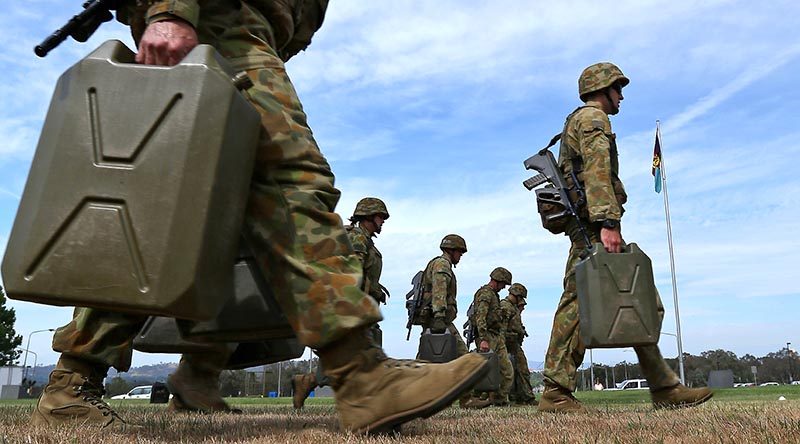
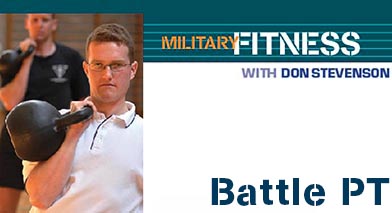


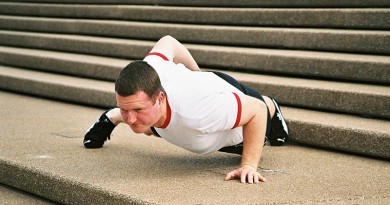
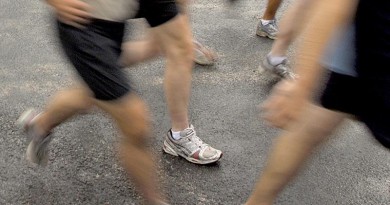
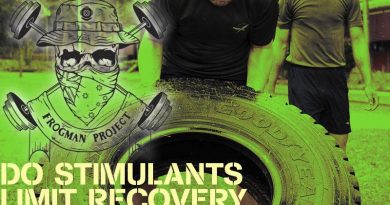
I, like many other “over 50” members is still required to maintain a over rated fitness level that requires lots of effort, just maintaining the BFA is fine, but this PESA is a joke. Why is it that as a member of unit I am required to complete a PESA, but those that lead us do not.. Fitness should be aged based and as previously mentioned by a comment lets try and reduce the burden on the tax payer and get realistic with the age requirements for fitness, lets try work environment versus requirement, I.E, office dwellers minimum BFA, combat teams, minimum a reduced type of PESA, possibly, god forbid, we actually use something that reflects the modern battlefields requirements such as run 2km, with your patrol pack, webbing, engage targets, reorg and move on, the PESA doesnt do this…
I love this series but am concerned that while we agree that a soldier’s first responsibility is to be sufficiently fit to undertake the most intensive of combat missions, there are a great number of us whose day – for anything up to 2-3 years – is spent behind a desk punching nothing more onerous than a set of keys.
Moreover, with the commitment of key decision makers in the ADF to expand a more inclusive and age-neutral workforce, there are many more years being spent behind said desk punching said keys. And at an ever increasing age.
Passing the requirements of a BFA or PESA at 20-25 years of age should be a given, and any soldier at this age should be capable of being pulled away from whatever he/she is doing and set the task of demonstrating that they are sufficiently fit to complete either or both. But, at 45 years of age, or 55 (or, yes, 65), meeting such requirements get harder with each passing year. But we still have to do it, even though those of us at the more tender time of life will never, unless we are really hard pressed, be required to take up a weapon and dash into the fray.
So, what is there for them? Keep on attempting to meet the fitness requirements until the body is fit for nothing more strenuous than arguing with DVA over how a hip replacement or knee reconstruction should be covered as work-related injury? Or are the powers-that-be going to realise that a significant chunk of the workforce is not actually required in Afghanistan or Iraq or wherever, but must maintain a level of fitness whereby they do not become a burden on the tax payer by virtue of their ever-growing list of aches and pains all gained as a result of being required to maintain a level of fitness which only a few require?
I thought the BFA requirements change with age? Walking instead of running. Less reps with age etc? I reckon the BFA is pretty close to the level of fitness civvies should be maintaining to stay healthy.
Fitness for individual readiness and deployment is different though. This arguably should be the case, due to the increased chance of needing admin and log staff to pick up a weapon.